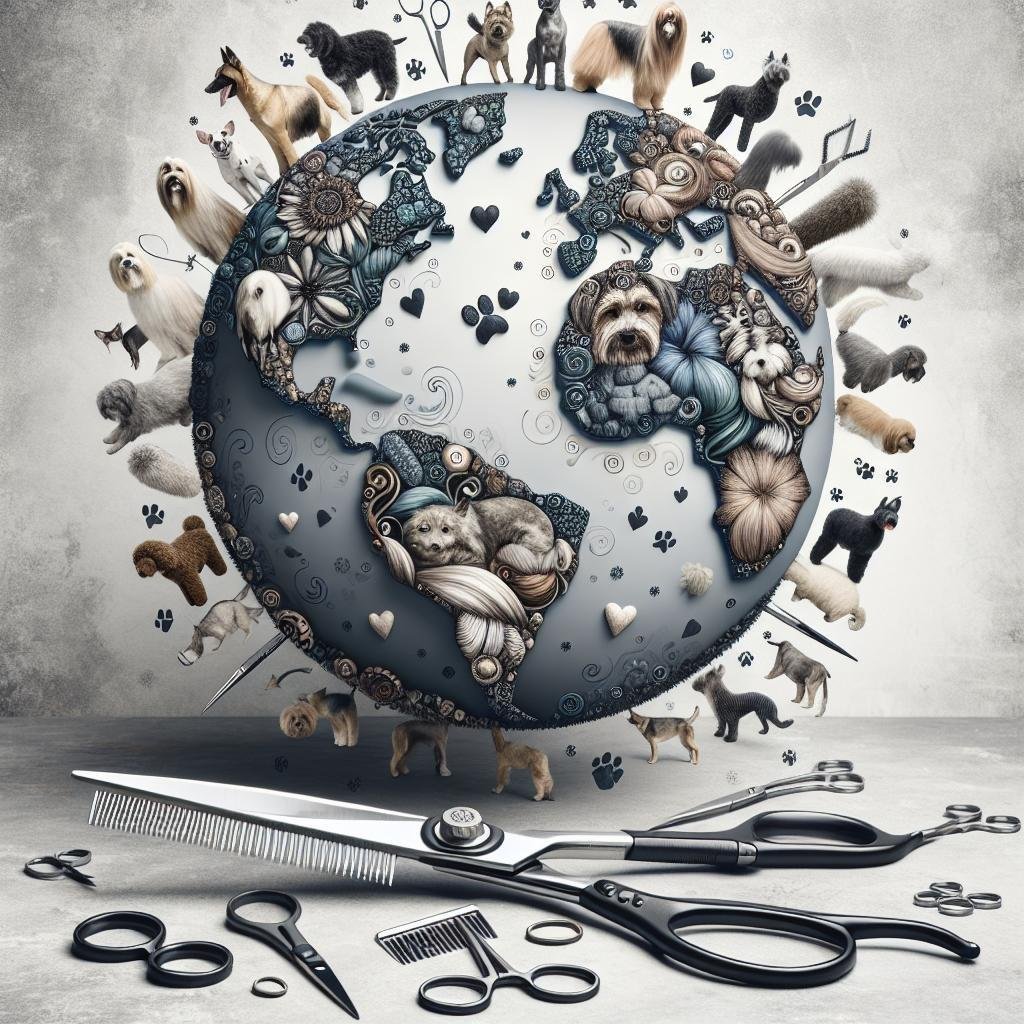
Check out our latest products
Welcome to the splendid world of pet grooming, where every snip, brush, and bath can bring you closer to your furry friend! Whether you’re the proud parent of a fluffy Pomeranian, a sleek Siamese, or a majestic Maine Coon, grooming is an essential part of keeping your pet happy and healthy. It can be daunting at first, but fear not! With the right techniques and a sprinkle of patience, you can transform grooming from a chore into a bonding experiance that leaves your pet looking and feeling fabulous. In this article, we’ll dive into tailored grooming tips designed for each breed, ensuring that your beloved companion shines brightly while you enjoy the process together. So, grab your grooming tools, roll up your sleeves, and let’s embark on a tail-wagging adventure that will make you both look forward to your next grooming session!
Table of Contents
- Understanding Breed-specific Grooming Needs for Happy Pets
- Essential Tools Every grooming Kit Should Include
- Creating a Relaxing Grooming Experience for Your Furry Friend
- tips for Maintaining a Healthy Coat Between Grooming Sessions
- Future Outlook
understanding Breed-Specific Grooming Needs for Happy Pets
Each dog breed comes with its own unique coat type, shedding patterns, and grooming requirements, making it crucial to understand the specific needs of your furry friend. As an example, hypoallergenic breeds like Poodles and Bichon Frises require regular clipping and brushing to prevent matting and maintain their curly coats. On the other hand, breeds such as Golden Retrievers and Siberian Huskies benefit from seasonal shedding cycles, which necessitate thorough brushing during shedding seasons to manage loose fur and reduce the amount that ends up on your floors.Here are some breed-specific grooming essentials to keep in mind:
- Short-haired breeds: Minimal grooming, occasional baths.
- Long-haired breeds: Daily brushing to prevent tangles.
- Double-coated breeds: seasonal grooming for optimal coat health.
- Curly-haired breeds: Regular trims and specialist grooming tools.
Understanding these grooming nuances can greatly enhance your pet’s comfort and overall well-being. A well-groomed pet not only looks and smells great but also has healthier skin and fur,which can prevent various health issues associated with neglect. Such as, keeping an eye on your dog’s ear health is essential, especially in breeds prone to ear infections, such as Cocker Spaniels. You can consult the table below for a quick reference on grooming frequencies and tools by breed:
| Breed Type | Grooming Frequency | Recommended Tools |
|---|---|---|
| Short-Haired | Weekly | Slicker Brush, Rubber Mitt |
| Long-Haired | Daily | Pin Brush, comb |
| double-Coated | Every 2 weeks | undercoat Rake, shedding Blade |
| Curly-Haired | Every 4-6 weeks | Curved Shears, Dematting Tool |
Essential Tools Every grooming Kit Should Include
To set the stage for a prosperous grooming session, a well-equipped grooming kit is essential. Every pet owner should include a selection of high-quality tools tailored to their furry friend’s needs. Start with a grooming brush suitable for your pet’s coat type—whether it be a slicker brush for long-haired breeds or a bristle brush for short-haired pups. Don’t forget to add clippers or scissors for those intricate cuts and touch-ups, as well as a dematting tool for those stubborn tangles. Additionally, keep a nail clipper on hand to manage those paws, and always have ear cleaning solution at the ready for maintaining clean and healthy ears.
Moreover, to ensure a stress-free grooming experience for both you and your pet, consider integrating a few grooming accessories into your kit. A grooming apron can protect your clothes, while pet wipes offer a quick clean between sessions. To keep your workspace organized, a tool caddy will help you stay on top of your supplies. Here’s a handy table showcasing some must-have grooming tools and their primary functions:
| Tool | Function |
|---|---|
| Grooming Brush | Removes loose fur and prevents matting |
| Nail Clipper | Trims and maintains healthy claws |
| Ear Cleaner | Maintains ear hygiene |
| Dematting Tool | Removes stubborn tangles |
| Clippers/Scissors | Provides precise cuts and trims |
Creating a Relaxing Grooming Experience for Your Furry Friend
Creating a calming habitat during grooming sessions can considerably improve your pet’s experience.Start with a cozy, quiet space where your furry friend feels safe and secure. Consider using soft music or white noise to mask any jarring sounds and reduce anxiety. You can enhance the ambiance with dim lighting or natural light to make the space feel warm and inviting. Don’t forget the power of positive reinforcement; rewards in the form of treats or beloved toys can definitely help create a positive association with grooming. It’s essential to remain patient and gentle, as this encourages your pet to trust the grooming process.
To further personalize the grooming experience, tailor your approach based on your pet’s breed, size, and temperament. Different breeds may have unique grooming requirements, so make sure to use the right tools and products suited to their needs. For instance:
| Breed Type | Grooming Tool | Recommended Frequency |
|---|---|---|
| Bernese Mountain Dog | Wide-toothed comb | Every 4-6 weeks |
| Poodle | Curved scissors | Every 4-8 weeks |
| Short-Haired Cats | Slicker brush | Once a week |
| Golden Retriever | Undercoat rake | Every 2-3 weeks |
Incorporating these tailored tips into your grooming routine will create a more enjoyable experience. Always keep an eye on your pet’s reactions and adapt your techniques to suit their comfort level, ensuring that bath time, brushing, and nail clipping become positive interactions rather than stressful chores.
Tips for Maintaining a Healthy coat Between Grooming Sessions
Maintaining your pet’s coat between grooming sessions is essential for keeping it healthy and vibrant. Regular brushing is key; it helps to remove loose fur, dirt, and debris while distributing natural oils throughout the coat. Consider incorporating these practices into your routine:
- Daily Brushing: For long-haired breeds, aim for daily grooming, while short-haired companions can benefit from brushing twice a week.
- Bathing Schedule: Use a mild,pet-friendly shampoo and bathe your pet every 4-6 weeks,adjusting based on their activity level.
- Hydration Matters: Ensure your pet has access to fresh water, as proper hydration contributes to healthy skin and coat.
Pay attention to your pet’s unique coat type; different breeds require specific care techniques. As an example, a curly coat may need more frequent detangling, while a double coat benefits from seasonal shedding management. Here’s a quick reference table to guide you:
| Coat Type | Care Tips |
|---|---|
| long-haired | Daily brushing to prevent tangles. |
| Short-haired | Brush weekly and use a rubber brush to remove loose hair. |
| Curly | Regular grooming to maintain curl structure. |
| Double | Shed out undercoat in spring and fall. |
future Outlook
As we wrap up our journey through the vibrant world of pet grooming, remember that mastering the art of grooming is not just about keeping your furry friend looking fabulous; it’s about bonding with them and enhancing their well-being. Every breed comes with unique grooming needs and quirks, but with the tailored tips we’ve explored, you’re now equipped to elevate your grooming game to the next level!
Embrace the joy of discovering what works best for your pet—whether it’s a gentle brush through a long-haired fur coat or the invigorating splash of a bath for your spirited pup. Each grooming session presents an possibility to strengthen your connection,showing your pet just how much you care. So grab those brushes, clippers, and treats, and let your grooming adventures begin!
Thank you for joining us on this grooming odyssey. Share your successes, stories, and even the occasional grooming mishap in the comments below! Together, let’s celebrate the beauty and joy our pets bring into our lives, one groom at a time. Happy grooming and tail wags! 🐾✨










